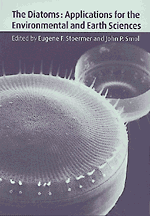Book contents
- Frontmatter
- Contents
- Contributors
- Preface
- Part I Introduction
- Part II Diatoms as indicators of environmental change in flowing waters and lakes
- Part III Diatoms as indicators in extreme environments
- Part IV Diatoms as indicators in marine and estuarine environments
- Part V Other applications
- 18 Diatoms and archeology
- 19 Diatoms in oil and gas exploration
- 20 Forensic science and diatoms
- 21 Toxic and harmful marine diatoms
- 22 Diatoms as markers of atmospheric transport
- 23 Diatomite
- Part VI Conclusions
- Glossary, and acronyms
- Index
21 - Toxic and harmful marine diatoms
Published online by Cambridge University Press: 16 January 2010
- Frontmatter
- Contents
- Contributors
- Preface
- Part I Introduction
- Part II Diatoms as indicators of environmental change in flowing waters and lakes
- Part III Diatoms as indicators in extreme environments
- Part IV Diatoms as indicators in marine and estuarine environments
- Part V Other applications
- 18 Diatoms and archeology
- 19 Diatoms in oil and gas exploration
- 20 Forensic science and diatoms
- 21 Toxic and harmful marine diatoms
- 22 Diatoms as markers of atmospheric transport
- 23 Diatomite
- Part VI Conclusions
- Glossary, and acronyms
- Index
Summary
Introduction
As White and Frady (1995) say in the Preface of their recent international directory on experts in toxic and harmful algae, ‘Toxic and harmful algal blooms present a growing global problem for fisheries, aquaculture, and public health.’ With entries from 58 countries, they list 22 countries with names and addresses of people working with harmful diatoms and/or their toxins: Australia (3), Canada (29), Chile (1), Croatia (1), Denmark (4), Germany (3), India (3), Israel (1), Japan (6), Netherlands (3), New Zealand (3), Norway (4), People's Republic of China (17), Republic of Korea (2), Romania (1), Russian Federation (1), Spain (6), Thailand (1), Turkey (1), United Kingdom (2), United States of America (29), and Vietnam (1), for a total of 122 workers around the world. One such list of international specialists was compiled by Woods Hole Oceanographic Institution Sea Grant Program in 1990 (subsequently updated), so that the consequences of outbreaks of toxic and harmful algal bloom events on fisheries and public health could be reduced. The purpose of this summary chapter is to serve as a resource for those faced with the challenges brought about by the changing dominant coastal diatom flora. In the study of toxic and harmful diatoms, there are applications for fisheries, public health institutions, mariculture, and tourism.
Harmful blooms
‘A first step in applied ecology is to accurately define the present state of the environment’, according to Rowe (1996, p. 7), and progress in this endeavor has been made.
- Type
- Chapter
- Information
- The DiatomsApplications for the Environmental and Earth Sciences, pp. 419 - 428Publisher: Cambridge University PressPrint publication year: 1999
- 6
- Cited by



